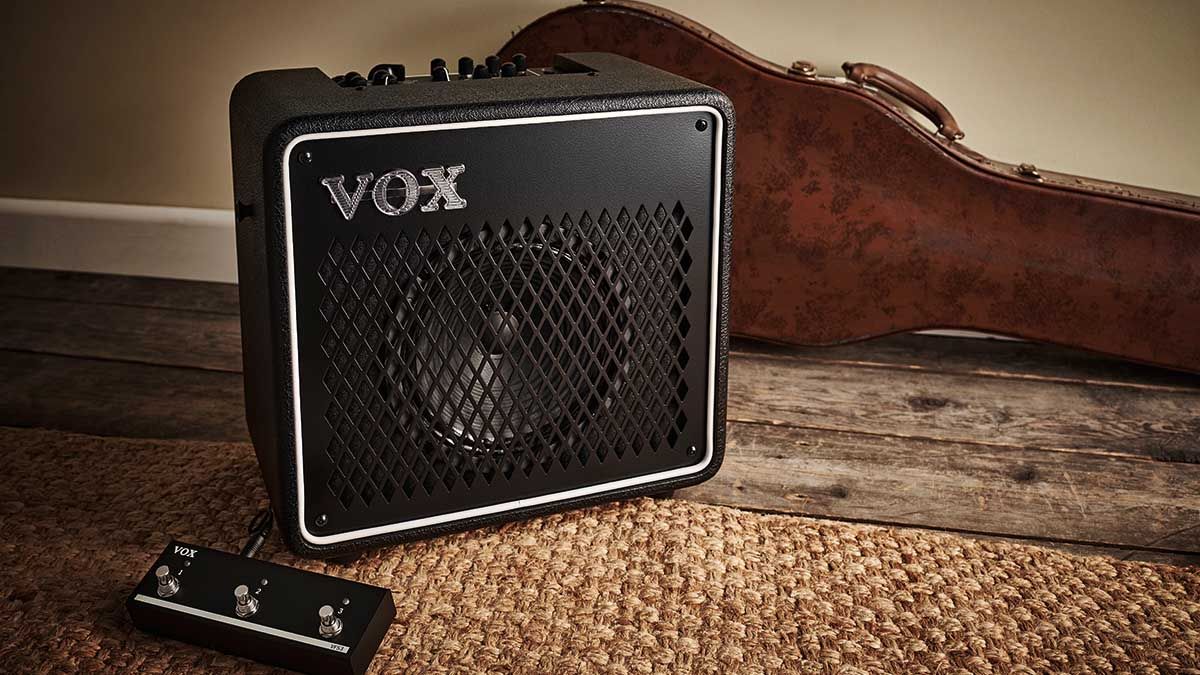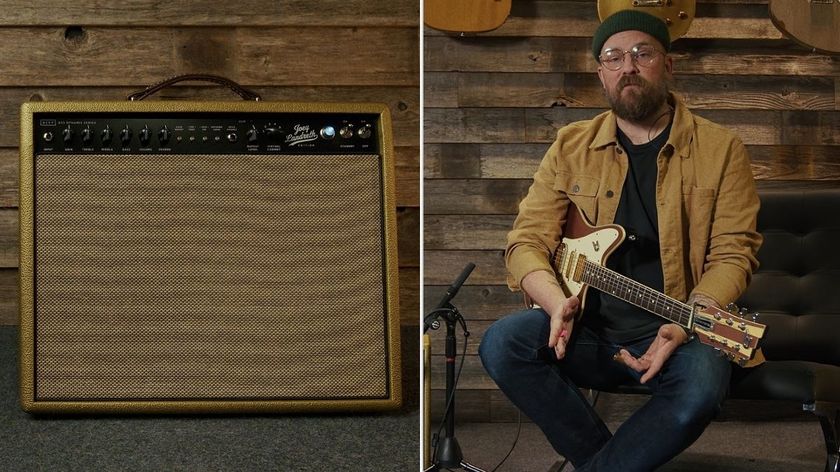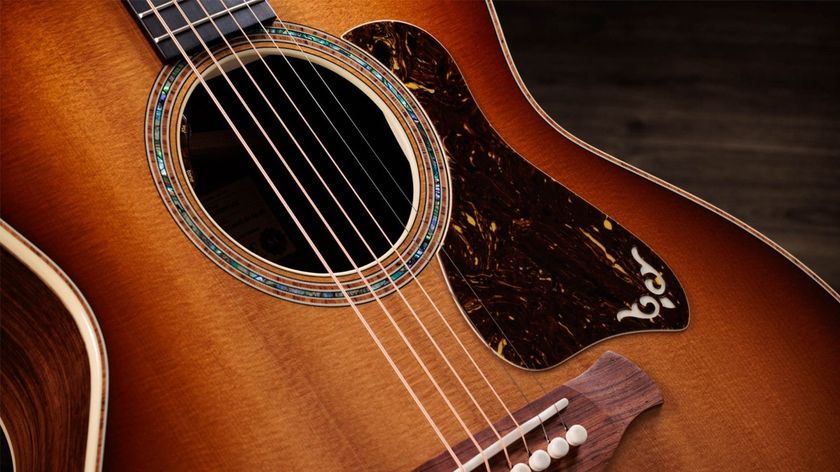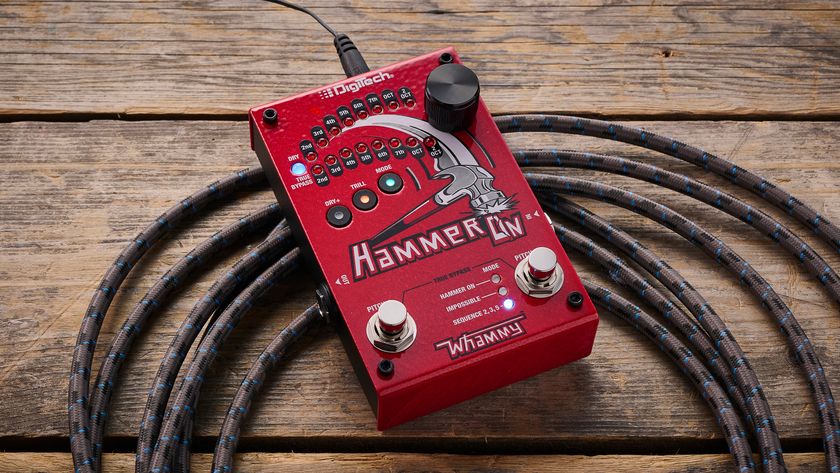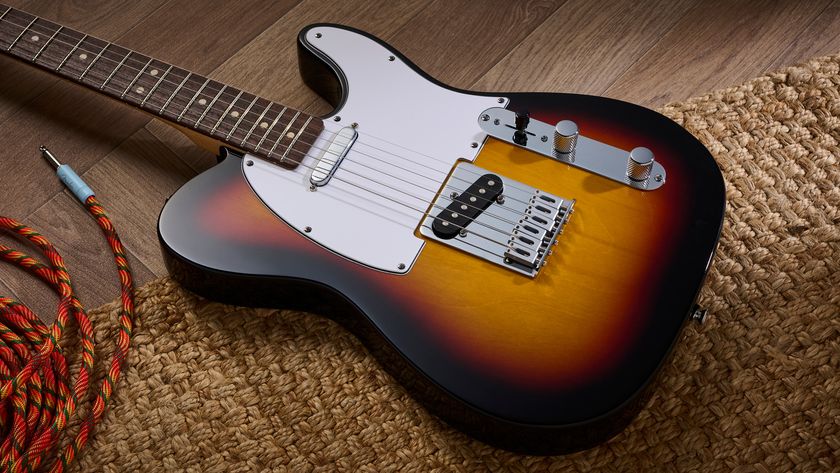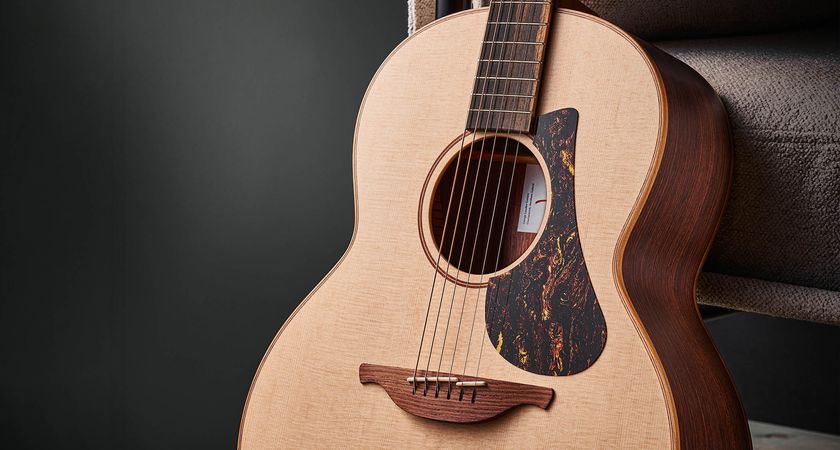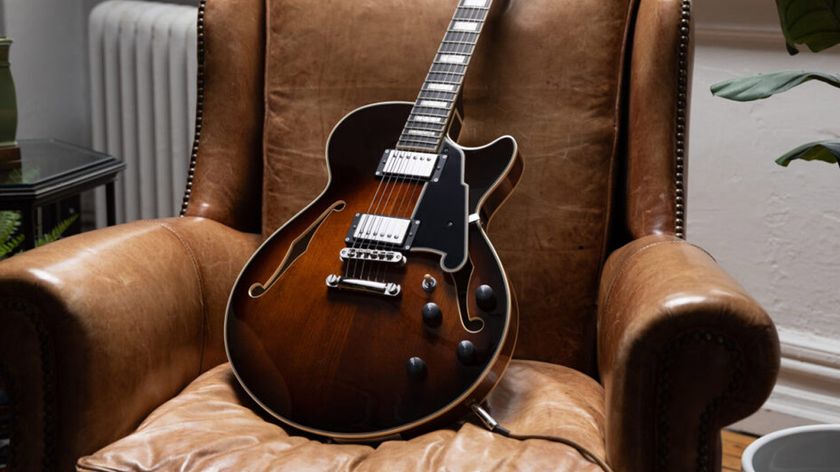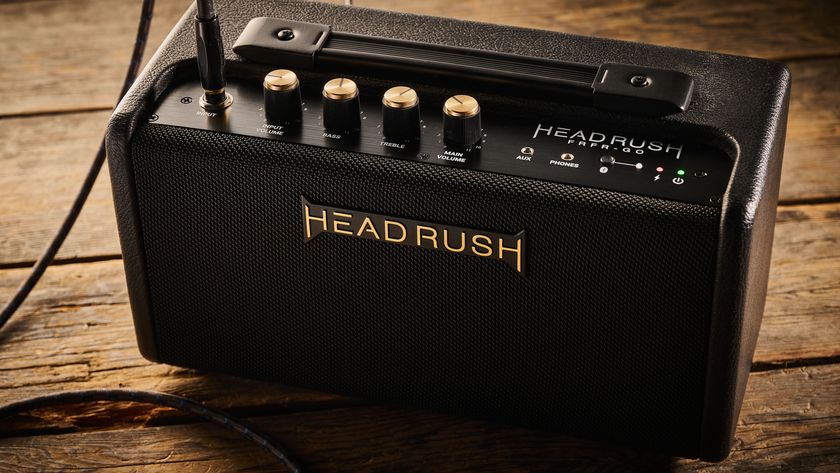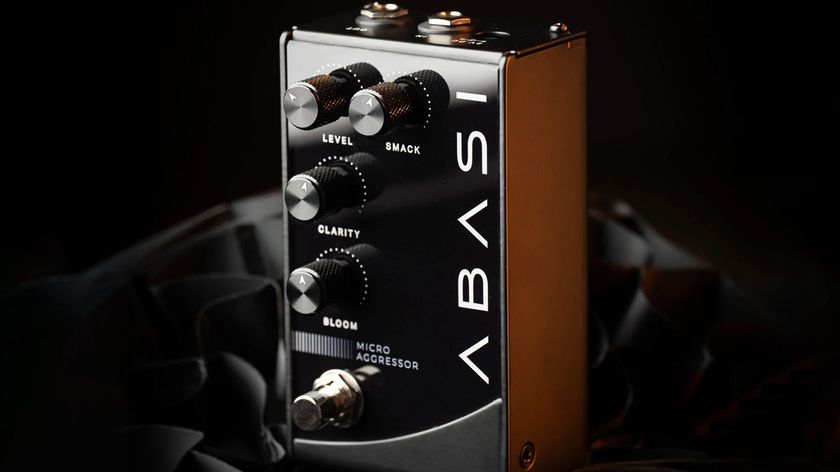Guitar World Verdict
A compact, do-it-all digital modelling combo that you can run on batteries and play anywhere, the Vox Mini Go 50 is an exceptional piece of kit, practical but ultimately lots of fun and tremendous value.
Pros
- +
Perfect busker’s companion.
- +
Built-in rhythm machine and looper.
- +
Amp sounds and effects.
- +
Foot-switchable.
- +
Can run on batteries.
Cons
- -
We’d swap the Vocoder effect for another good amp voice.
- -
We wish the looper had 15 seconds’ more recording time.
You can trust Guitar World
We all know Vox amps go right back to the beginnings of pop and rock over 60 years ago, but it might come as a surprise for some that the company’s digital modelling products have been with us for around 20 years now, writing a significant chapter in Vox’s long and colourful history.
Unlike valves, digital guitar amplification methods are still being developed, and Vox’s current modelling products use VET or Virtual Element Technology, an evolution of the original REMS engine used on early Valvetronix amps and effects, both of which were developed by Vox’s parent company, synth giant Korg.
In keeping with Vox’s reputation for innovation, VET incorporates many cutting-edge refinements and captures traditional valve circuits in unprecedented digital detail, as we found out last year on Vox’s Cambridge50. Vox’s new portable Mini Go range of amps is the latest to benefit from this exciting technology and here we’re looking at the largest of the trio, the feature-laden Mini Go 50.
This is a compact and portable combo with a single eight-inch custom loudspeaker, housed in a smartly finished cabinet with a rear port to enhance bass frequencies. A diamond-patterned speaker grille echoes the famous cloth used on classic AC amps, and a prominent silver Vox badge shines in the top left corner.
There’s no carry handle; instead, the amp comes with a shoulder strap that hooks on to a pair of side-mounted studs. There’s also a small pair of tilt feet, which allow the Mini Go to be safely angled backwards for better monitoring.


Around the back there are two power sockets, one for the laptop-style mains adaptor and a USB-C for standard mobile five-volt power supplies, which means the Mini Go 50 can be used anywhere. There’s a third socket for the optional VFS3 programmable footswitch, which remotely controls all the amp’s essential functions.
The control panel has separate inputs for guitar and microphone, with a level Trim and aux Send control for the latter, feeding the Mini Go’s delay and reverb effects. There are nine amp models in total, including seven well-known favourites from Vox’s Cambridge50, together with a new Vocoder effect and a Line input for amplifying electro-acoustic guitars or keyboards. The amp controls include gain, bass, treble and master volume, which become bass, mid, treble and volume when the line input is selected.
A three-way power switch lets you select from either full power, 1/10th or 1/100th output, for stage, quiet practice or recording, and you can store and recall up to three patch settings. Below the amp controls, the Mini Go 50 has two effects sections: three modulations and an octaver on section one, and delays and reverbs on section two.

Next to the effects we find the Mini Go 50’s drum machine, featuring 33 patterns grouped into distinct genres, with tempo and level controls. And there’s still more to come in the shape of a looper with a handy maximum recording time of around 45 seconds, together with a tuner function, an aux in and a headphone output, both on 3.5mm jacks. The headphones output disables the speaker and can be used for silent recording when needed.
Overall, the Mini Go 50 is well built to typically high Vox standards, looking smart and ready to rock with an impressive range of features.
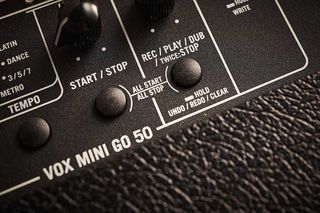
Features
The Mini Go 50’s amp voices use the same VET engine as the Cambridge50 and sound impressively authentic. The classic AC30 Normal and Top Boost channels both provide a wide range of excellent tones, from shimmering cleans and chiming rhythms to highly responsive classic rock and blues.
Beside these two gems, there’s a tempting choice of Brit- and American-influenced cleans and overdrives, including the D-style Boutique Cl and Boutique OD, which both sound remarkably authentic, while gain fiends will enjoy the Double Rec and SL-OD simulations, which make even the weediest single coils sing with practically endless sustain and fat, chugging bass.
The new Vocoder voice is a strong special effect and perhaps best used sparingly. Used with a microphone it adds vowel sounds to single notes or chords as you speak or sing, or you can use it without a microphone, in which case the vowels are triggered by picking, which is another useful sound.
The Line input has enough clean headroom to take most keyboards without distorting, and the EQ will suit most electro-acoustics without too much fiddling around; it’s a good, usable tone.
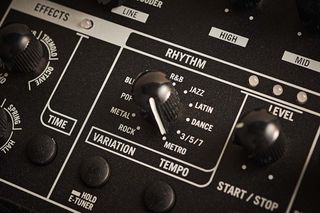
The other onboard effects don’t disappoint, either, with lush chorus and phaser modulations, an authentically vintage-sounding tremolo and a fat octaver that turns into a mono synth bass at the end of the control knob’s travel. Effects section two rounds things off with analogue and digital delays softened by spring or hall reverbs. While the guitar can access both effects sections, the microphone input is sensibly limited to delay and reverb.
The Mini Go 50’s drum machine sounds aren’t quite up to the same standard as its amp voices, but still more than adequate for live use, with a wide range of variations on each genre. The looper is easy to use and great fun, automatically quantising to a rhythm pattern, while the drum machine works vice versa, automatically adjusting tempo to recorded loops. As well as making the Mini Go 50 a powerful practice tool, these two features will spice up any solo live performance.
If you’re planning on using the Mini Go 50 live then the optional VFS3 footswitch becomes more of a necessity as you can assign a variety of different functions to the three buttons: for example, operating the looper, switching effects on and off, or accessing the three saved patch settings.
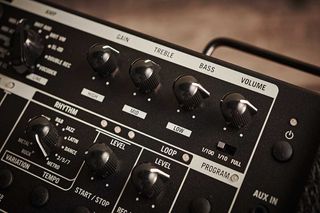
Verdict
We barely scratched the surface of the Mini Go 50’s potential in the short time we had it, but it’s clear that if you’re a serious solo performer on the street/busking circuit, this is an amp you really need to become acquainted with.
Combined with the rhythm machine and looper, there’s plenty of inspiration on tap for original music or pro-standard covers, while the authentic amp sounds are first class, with plenty of power to make yourself heard and impressive lows from the ported cabinet. For non-buskers, this is still an inspiring practice and recording tool – the great tones will sit happily in any pro-standard recording.
As an overall package, it’s amazing value for money. If you don’t need the preset storage or the high power output, the Mini Go 10 is equally impressive, while the Mini Go 3 does away with the looper but retains those great amp sounds and the drum machine. Whichever you choose, the Mini Go amps all come with great fun included, which is surely what it’s all about.
Specs

- PRICE: $299 / £259
- ORIGIN: Vietnam
- TYPE: Digital modelling preamp with solid-state power stage
- OUTPUT: 50W RMS into 4 ohms, switchable to 5W or 0.5W
- VALVES: None
- DIMENSIONS: 390 (w) x 250 (d) x 358mm (h)
- WEIGHT (kg/lb): 7/16
- CABINET: Particle board
- SPEAKER: 1 special-design 8”
- CHANNELS: 11 amp models, 8 effects, 33 rhythm patterns, separate mic input with Trim and FX Send
- CONTROLS: Amp selector, gain, treble bass volume. Microphone Trim and Send level controls. Program store/recall button. Effects select/edit x2, effects tap tempo. Rhythm genre selector, variation select button, tempo button, start/stop button, level control. Looper level control, record/play dub button
- FOOTSWITCH: 3-button VFS3 footswitch (optional) can be assigned to 14 different functions
- ADDITIONAL FEATURES: Aux in, headphones output, tuner function, auto power off, tilt-back feet, can be powered by mobile batteries via USB-C input on rear
- OPTIONS: VFS3 3-button programmable footswitch is £59
- RANGE OPTIONS: Mini Go 10 (£199) has a single 6.5” speaker; the smaller Mini Go 3 (£149) has a 5” speaker
- CONTACT: Vox Amplification
Nick Guppy was Guitarist magazine's amp guru for over 20 years. He built his first valve amplifier at the age of 12 and bought, sold and restored many more, with a particular interest in Vox, Selmer, Orange and tweed-era Fenders, alongside Riveras and Mark Series Boogies. When wielding a guitar instead of soldering iron, he enjoyed a diverse musical career playing all over the UK, including occasional stints with theatre groups, orchestras and big bands as well as power trios and tributes. He passed away suddenly in April 2024, leaving a legacy of amplifier wisdom behind him.
